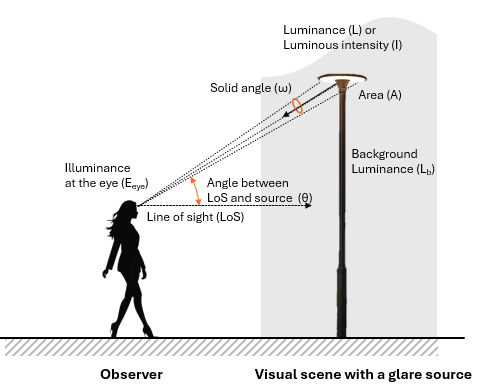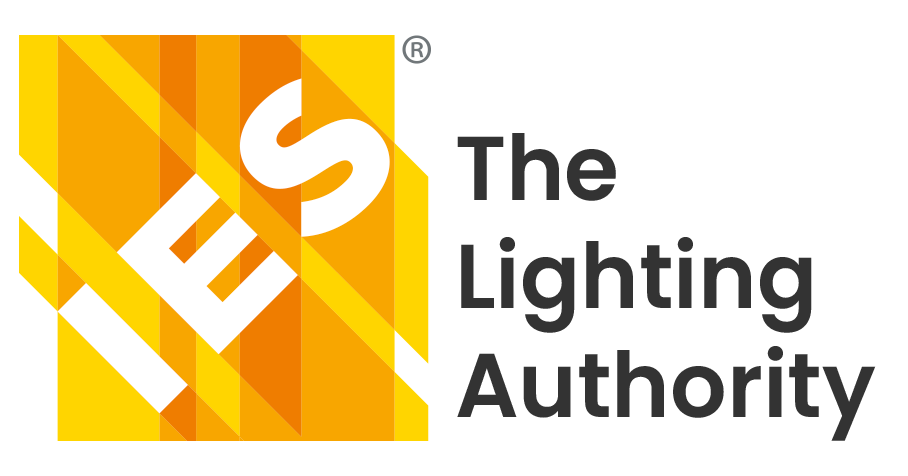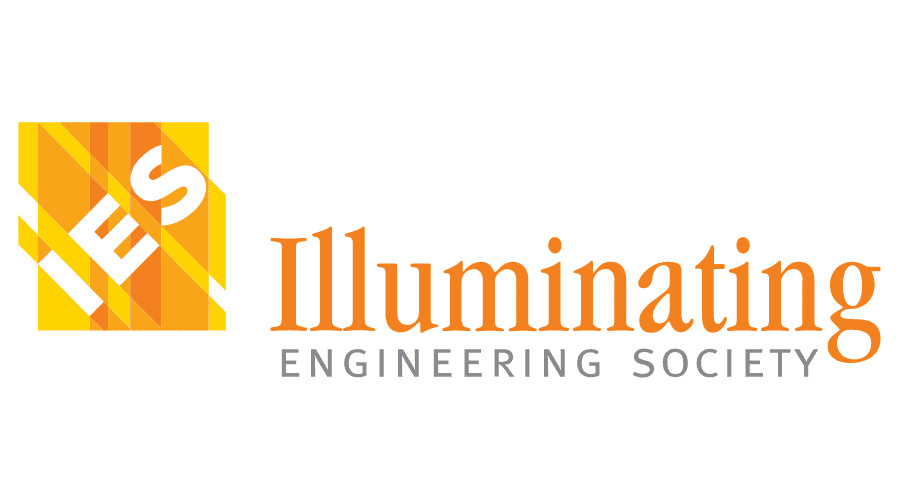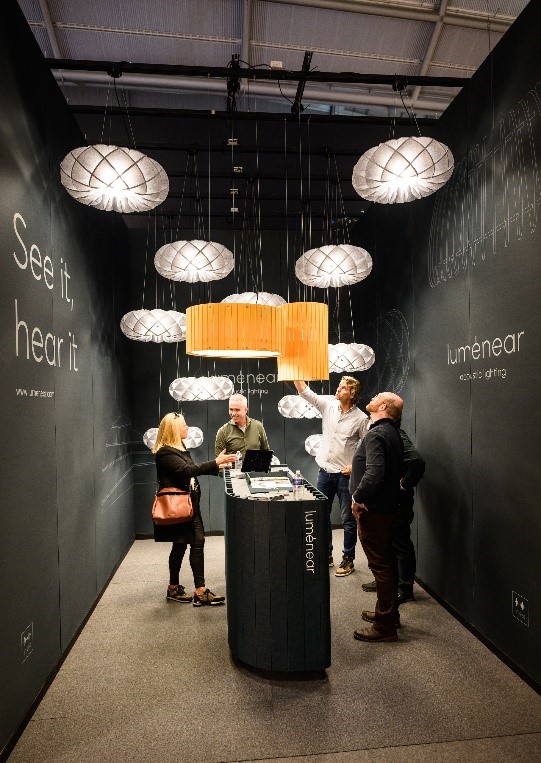Abstract
There is a substantial need in establishing a practical discomfort glare model for glare prediction and subsequent reduction in lighting installations with stationary or slow-moving observers in outdoor spaces after dark. This article covers 16 relevant discomfort glare models for predicting discomfort glare in outdoor nighttime applications for observers, residents, and pedestrians, for small sources, and non-uniform sources. It discusses the necessary steps forward for accepting a discomfort glare model in the industry.
1. What is a discomfort glare model and why do we need it?
There are two main types of glare – discomfort and disability [1,2]. Disability glare impairs visual performance or visibility without necessarily causing discomfort. Discomfort glare is defined as glare that causes discomfort without necessarily impairing the vision of objects [1]. It is typically described as a sensation of annoyance or pain from a high-luminance glare source in the field of view [3]. The underlying mechanisms for discomfort glare are not well understood which makes it harder to grasp. The main factors that affect the perception of discomfort glare are the luminance and size of the glare source, its position, and the background or adaptation luminance (Figure 1). Illuminance at the eye and luminous intensity are also frequently used in discomfort glare model equations [4].

Most discomfort glare studies are completed with the psychophysical approach – a quantitative method that measures the relationship between stimuli (e.g. a glare source) and a human response (e.g. 9-point De Boer scale [5]) [6]. Then a model is fitted to these data. Discomfort glare model is a mathematical formula that inputs the characteristics of a source that causes glare, the geometry of the visual scene, and in some cases physiological inputs such as the eye color and outputs a subjective perception of glare on a scale (Figure 2). In some cases, the effect from multiple sources is summed up. A general formulation of discomfort glare (DG) equation, for a single small glare source, that expresses subjective response on a numerical scale is the following [7]:

- L – the source luminance, cd/m2
- ω – the solid angle subtended at the eye by the source, sr
- Lb – the background luminance, cd/m2
- P – the position of the glare source in the field of view
- a, b, c, d – the exponents that differ between systems
Acceptance of such a model would provide a tool for lighting designers and other practitioners to assess and predict the amount of glare in existing or future installations. They would be able to input the necessary parameters during the design stage or measure them in the existing installation and calculate the average amount of perceived glare using an equation.

2. Applications for stationary or slow-moving observers
The negative effects of discomfort glare on the comfort of pedestrians and residents can lead to fatigue and affect performance and alertness [8]. Pedestrian and resident applications are characterized by (1) low luminance background (e.g. dark streets) that creates high contrast with (2) high luminance light sources (e.g. Light Emitting Diodes (LEDs)); (3) multiple sources in the field of view; (4) variable gaze allocation; and (5) dynamic observation of the environment. Light sources can be viewed from close-up distances such as in a park with the non-uniformity of the source visible or from far distances such as from a sports field nearby the residence. Non-uniform sources are defined here as the sources with the non-uniform spatial luminance distribution over the light-emitting area such as an LED array. There is a substantial need in establishing a practical discomfort glare model that can be used by professionals for glare prediction and assessment for subsequent reduction of glare in lighting installations and improvement of its quality.
3. Discomfort glare models
Tyukhova [4] conducted a comprehensive literature review and identified at least 16 models that have been developed or used for pedestrian and resident applications in outdoor nighttime environments (Table 1). Table 1 lists all these models with their intended purpose, and if the model was developed for a different application, it provides a study that assessed it in the pedestrian or other relevant applications. Indoor, daylighting, and road and vehicle lighting models are not included in the list below unless they have been assessed in pedestrian studies. Models are abbreviated with the first 3 letters of the name and year (except CBE, GR, and UGRs). All equations, applicable conditions, and the origin of each metric are provided in [4] with details in the Appendix. Even though numerous models of discomfort glare exist, none are accepted for this type of application.
| Model/Metric abbreviation | Purpose | Origin reference(s) | Assessed in pedestrian or other relevant applications |
|---|---|---|---|
| Pet1950 | Model for assessing discomfort glare indoors including from small windows | [9] | [10] |
| Sch1974 | Motor vehicle and street lighting discomfort glare model | [11] | [10, 12, 13/31] |
| CBE | Cumulative brightness evaluation (CBE) system for roadways and street lighting | [14-19] | 20 |
| GR (CIE1994) | Outdoor sports and area lighting model (Glare Rating (GR)) | [21, 22] | [23, 13/31] |
| CIE2000 | Luminaire glare restriction formula for residential and pedestrian areas | [24-26] | |
| UGRs (CIE2002) | Unified Glare Rating small source extension(UGRs) for indoors | [27-30] | [13/31, 20, (32 for UGR)] |
| Bul2008 | Outdoor lighting installation discomfort glare model | [33] | [10, 12, 13/31] |
| Bul2011 | Outdoor lighting installation discomfort glare model | [34-36] | [12, 13/31] |
| Lin2014 | Model predicting discomfort glare from uniform LED road lights | [37] | [10, 12] |
| Lin2015 | Model predicting discomfort glare from uniform LED road lights | [38] | [10, 12] |
| CIE2017 | The limitation of the effects of obtrusive light from outdoor lighting installations | [39, 14, 40-44] | |
| Gir2023 | Probabilistic discomfort glare model for LEDs in outdoor lighting | [45, 46] | |
| Tas2015 | Model for white LED light sources with different spatial arrangements in outdoor conditions | [47] | |
| Koh2015 | Model for estimating discomfort glare from uniform and non-uniform sources in pedestrian zones for peripheral viewing | [23] | |
| CIE2019 | Discomfort glare model for non-uniform sources in indoor environments | [48, 47, 49-55] | |
| Vis2023 | A generic, visual system-based model for discomfort glare | [56] |
Table 2 provides a summary of the reviewed models in relation to the main characteristics of the pedestrian application outlined in section 2. Typically, pedestrians are moving along the path and dynamically observing their environment in a large field of view [12, 57, 58]. However, all reviewed models were developed for a static observer with a limited gaze direction. Observers typically looked at a fixation point in the study while source positions were varied – it is described with either the angle between the source and the line of sight or the position index in the model’s equation. The exception is the Pet1950 system that was still tested with a fixed line of sight, but the angular dependence was not included in the final equation. Three indoor models are included here – Pet1950 was previously assessed in a pedestrian study [10], UGRs is an indoor model specifically for small sources that are also common outdoors, and CIE2019 is the indoor model that addresses the non-uniformity of the source and might be valuable for understanding how non-uniform sources affect the perception of glare outdoors.
Non-uniformity of the source is addressed in only 4 models – two models (Tah2015, Koh2015) proposed a non-uniformity modification to the Unified Glare Rating (UGR) in outdoor conditions after dark, CIE2019 for indoors, Vis2023 for general applications. Most models consider only 1 glare source. Pet1950, CBE and CIE (1994, 2002) sum up multiple sources in their equations, and Sch1974 and Gir2023 were developed with up to 5 and 10 sources in the field of view respectively. All reviewed models were developed almost exclusively using a subjective method [4], most commonly a 9-point category rating scale (although with different labels) or an adjustment procedure to the borderline between comfort and discomfort (BCD). The development of the generic discomfort glare model Vis2023 is an exception (see types of model development methods in [4]); however, it was still calibrated using the subjective data from [40]. The influence of the spectral power distribution (SPD) on discomfort glare has been discussed in many studies (for a short summary see [48]). Generally, the light sources with more blue content tend to produce more discomfort glare for the same luminance level. However, none of the reviewed models include the spectral effect.
| Model/Metric abbreviation | Gaze during experiment/formula applicability | Moving observers | Background luminance or illuminance (Lb or Eb)* | Source non-uniformity considered | Source size | Multiple sources | Subjective scale type |
|---|---|---|---|---|---|---|---|
| Pet1950 (indoor) | Fixed/10-50° but no angular dependence in the equation | No | Adjusted by participants to match 4 levels of discomfort | No |
2.7*10^(-4),8.5*10^(-4),2.7*10^(-3),8.5*10^(-3),2.7*10^(-2) sr
|
Sum up | 4-point |
| Sch1974 | Fixed/10 min arc to 90° | No | 0.003-20 cd/m2 | No | 8 min arc | Up to 5 | 9-point |
| CBE | Fixed/0-30°** | No** | 0.003-34 cd/m2 ** | No ** |
10^(-6) –10^(-3) sr **
|
Sum up | Related to BCD |
| CIE1994 | Fixed/1.5-60° | No | Lve*=0.02-5 cd/m2 | No | Outdoor sports | Sum up | 9-point |
| CIE2000+ | Fixed/5° above the horizon | No | 0.5-1 cd/m2 | No |
7.9*10^(-5) –
|
1 | 9-point |
| CIE2002 (indoor) | Fixed/>5° off the line of sight | No | Indoor levels | No | Projected area 0.005 m2 | Sum up | Not reported (assumed to be 10 to 30 [59]) |
| Bul2008 | Fixed/0° | No | Ea*=0.01-1.6 lx Es*=0.01-0.4 lx | No | Variable/not reported | 1 | 9-point |
| Bul2011 | Fixed/0° | No | 0.2 or 45 cd/m2 below the source in [35] – Not reported in [36] | No | >0.3° | 1 | 9-point |
| Lin2014 | Fixed/10-20° | No | 1, 5, 8 cd/m2 | No |
1*10^(-5),9*10^(-5)
|
1 | 9-point |
| Lin2015 | Fixed/2-16° | No | Eb*=0-200 lx | No | 10° | 1 | 9-point |
| CIE2017 | Fixed/0° | No | 0.1-10 cd/m2 | No |
10^(-7) –10^(-2) sr
|
1 | BCD and category scale (multiple studies see Table 1) |
| Gir2023 | Fixed/4.2-9.6° | No | 0.1-7 cd/m2 | No | 5*10^(-6) | 1,3,10 | 4-point |
| Tas2015 | Fixed/8.5° | No | 0-10 cd/m2 | Yes | <5°x5° | 1 | 9-point |
| Koh2015 | Fixed/5-40° | No | Ehor*=6-9.8 lx | Yes |
0.057*10^(-3) –1.5*10^(-3)
|
1 | 9-point |
| CIE2019++ (indoor) | Fixed/±71° horizontally and 60° vertically | No | Indoor | Yes | 0.0003-0.1 sr | 1 | 10 to 30 |
| Vis2023 (generic) | Fixed/‘close to the line of sight’ | No | General | Yes | Small to ‘medium- sized’ | 1 | Glare sensation score |
Notes:
* Various definitions:
- Lb is the background luminance, cd/m2;
- Eb is the vertical illuminance provided by ambient light, lx;
- Ehor is the horizontal illuminance on the road surface, lx
- Ea is the vertical ambient illuminance at the subject’s viewing location (the light source being tested is switched off), lx;
- Es is the surround illuminance (illuminance at the eyes received from a light source after being reflected or scattered), lx
- Lve is the equivalent veiling luminance from the environment, cd/m2 [22]
**Provided ranges refer to the conditions of the BCD formula development for a single source in [14] – one of the first studies that laid the groundwork for the CBE development.
+ Provided ranges refer to the conditions in [25, 26]
++ Applicability of CIE2019 is assumed to be the same as the UGR [59] since CIE2019 proposed a modification for non uniform sources with a ‘minimum deviation from the original definition of UGR’.
Among the barriers to model acceptance and implementation for this application (and in general) are:
- The variety of subjective scales used in the studies. The comparison of studies becomes difficult, because the correspondence rules between the scales must be established and the assumptions are not straightforward [20].
- Limited conditions of the formulas that do not characterize pedestrian application. There is a lack of sufficient research for important aspects of this application such as non-uniformity, dynamic viewing, and variable gaze.
- Measurement of glare-relevant parameters in the real world [4]. Ambiguity in characterization of the glare source and its environment prevents consistent measurements and easy comparison between study results.
- The lack of assessment of models on independent datasets and in real-world applications.
4. Next steps
A reliable model of discomfort glare should be accurate, simple, and applicable to real-world situations. When conditions of the application are similar to those of the model’s development, discomfort glare model should provide a reasonable estimation of glare perception for practical purposes. However, if a formula is used outside of its intended domain of validity, it can lead to serious mistakes [60]. Testing models on a single study with new conditions might not be sufficient to estimate the performance of the model, since the range of variables might inadvertently favor one model over the other [10]. Models that were developed based on multiple studies [39, 59], studies that compare multiple models on new independent datasets [12, 20, 13/31], on multiple datasets [10, 61] or include additional measures (e.g. physiological) that capture objective responses show more promise [4]. Studies conducted in the field are more generalizable [12, 20], although might have unknown confounding variables such as the weather and the noise levels.
Among 16 reviewed discomfort glare models, only a limited set was assessed in independent studies as compared to many more potentially relevant models (see Table 1). These models need to be assessed on multiple independent datasets that characterize pedestrian and resident applications (variable gaze, dynamic viewing) and include multiple uniform and non-uniform sources in controlled and real outdoor environments. This includes complex human vision discomfort glare models such as Vis2023 that incorporate physiological processes of glare sensation. Methodological and measurement challenges need to be addressed with the development of replicable and easily employable methods and standards for consistency of studies and adoption of discomfort glare models. These standards will guide the scale choice, methodology, and the measurement requirements for quantities such as the luminance of a non-uniform source and the luminous maps specifications.
References
- [1] (CIE) Commission Internationale de l’Eclairage, ILV: International Lighting Vocabulary, second ed., 2020. CIE S 017:2020, https://cie.co.at/e-ilv. (Accessed 24 August 2023).
- [2] (IES) Illuminating Engineering Society, Lighting Science: Nomenclature and Definitions for Illuminating Engineering, 2022. ANSI/IES LS-1-22, https://www.ies.org/standards/definitions/. (Accessed 24 August 2023).
- [3] D. DiLaura, K. Houser, R. Mistrick, G. Steffy 2011. The lighting handbook. 10th ed. Reference and application. New York (NY): Illuminating Engineering Society. p. 1328.
- [4] Y. Tyukhova 2024. Discomfort glare in outdoor nighttime environments after dark – A review of methods, measures, and models. Building and Environment Volume 263, 111850, ISSN 0360-1323 https://doi.org/10.1016/j.buildenv.2024.111850
- [5] J. De Boer, D. Schreuder, Glare as a criterion for quality in street lighting, Trans. Illum. Eng. Soc. 32 (2) (1967) 117–135, https://doi.org/10.1177/147715356703200205.
- [6] E.B. Goldstein, Sensation and Perception, 9 ed., Wadsworth, Cengage Learning, Belmont, CA, 2014.
- [7] P. Boyce, Human Factors in Lighting, third ed., CRC Press, 2014 https://doi.org/10.1201/b16707.
- [8] W. Van Bommel, Road Lighting: Fundamentals, Technology and Application, Springer, 2015.
- [9] P. Petherbridge, R. G. Hopkinson, Discomfort glare and the lighting of buildings, Trans. Illum. Eng. Soc. 15 (2_IEStrans) (1950) 39–79, https://doi.org/10.1177/147715355001500201.
- [10] B. Abboushi, S. Fotios, N. Miller, Predicting discomfort from glare with pedestrian-scale lighting: a comparison of candidate models using four independent datasets, Light. Res. Technol. 56 (3) (2024) 225–246, https://doi.org/10.1177/14771535231162505.
- [11] H. Schmidt-Clausen, J. Bindels, Assessment of discomfort glare in motor vehicle lighting, Light. Res. Technol. 6 (2) (1974) 79–88, https://doi.org/10.1177/096032717400600204.
- [12] C. Villa, R. Bremond, E. Saint-Jacques, Assessment of pedestrian discomfort glare from urban LED lighting, Light. Res. Technol. 49 (2) (2017) 147–172, https://doi.org/10.1177/1477153516673402.
- [13] Y. Tyukhova, C. Waters, Discomfort glare from small, high-luminance light sources when viewed against a dark surround, Leukos 14 (4) (2018) 215–230, https://doi.org/10.1080/15502724.2018.1434415.
- [14] C. Bennett, Discomfort glare: concentrated sources—parametric study of angularly small sources, J. Illum. Eng. Soc. 7 (1) (1977) 2–15, https://doi.org/10.1080/00994480.1977.10748959.
- [15] M. Rubison, C. Bennett, Discomfort Glare: Distribution of Responses – a Reanalysis, Manhattan, Kansas, 1979. Special report 132.
- [16] C. Bennett, Discomfort Glare: Roadways (I): Four Experiments on Multiple Sources, Kansas State University, Manhattan, Kansas, 1979. Special Report 129.
- [17] C. Bennett, Discomfort Glare: Roadways (II): Number of Sources in a Linear Array, Kansas State University, Manhattan, Kansas, 1979. Special Report 131.
- [18] M. Keck, Discomfort glare as related to roadway lighting. Proceedings of the First International Symposium on Glare, 1991, pp. 129–135. Orlando, Florida.
- [19] W. K. Adrian, Comparison between the CBE and the CIE glare mark formula and earlier discomfort glare descriptions. Proceedings of the First International Symposium on Glare, 1991, pp. 155–164. Orlando, Florida.
- [20] C. Villa, R. Bremond, E. Saint Jacques, E. Dumont, Predicting the Discomfort Glare Experienced by Pedestrians: UGR and CBE, CIE Midterm Meeting, 2017.
- [21] (CIE) Commission Internationale de l’Eclairage, Glare Evaluation System for Use within Outdoor Sports and Area Lighting, 1994, p. 112 (Vienna, Austria: CIE).
- [22] W. Van Bommel, J. Tekelenburg, D. Fischer, A glare evaluation system for outdoor sports lighting and its consequences for the design practice, in: Proceedings of the the 20th Session of the CIE, 1983, pp. D505/1–D505/4.
- [23] S. Kohko, M. Ayama, M. Iwata, N. Kyoto, T. Toyota, Study on evaluation of LED lighting glare in pedestrian zones, J. Light Vis. Environ. 39 (2015) 15–25, https://doi.org/10.2150/jlve.IEIJ150000566.
- [24] (CIE) Commission Internationale de l’Eclairage, Guide to the Lighting of Urban Areas. CIE 136, 2000, p. 2000 (Vienna, Austria: CIE).
- [25] J. Caminada, W. van Bommel, New considerations for residential areas, Int. Light. Rev. 3 (1980) 69–75.
- [26] J. Caminada, W. van Bommel, New lighting criteria for residential areas, J. Illum.Eng. Soc. 13 (4) (1984) 350–358, https://doi.org/10.1080/00994480.1984.10748787.
- [27] (CIE) Commission Internationale de l’Eclairage, CIE Collection on Glare, 2002, pp. 146–147 (Vienna, Austria: CIE).
- [28] C. Benz, Untersuchungen uber die psychologische blendung bei umfeldleuchtdichten im mesopischen bereich. Investigation of Discomfort Glare under Mesopic Ambient Luminance Levels), 1966 (in German). Ph.D. diss., Technischen Hochschule Karlsruhe.
- [29] B. Paul, The Assessment of Light Sources, University of Cape Town, 1997. Master’s thesis.
- [30] B. Paul, H. Einhorn, Discomfort glare from small light sources, Light. Res. Technol. 31 (4) (1999) 139–144, https://doi.org/10.1177/096032719903100402.
- [31] Y. Tyukhova, Discomfort Glare from Small, High Luminance Light Sources in Outdoor Nighttime Environments, University of Nebraska – Lincoln, 2015. Ph.D. dissertation, https://digitalcommons.unl.edu/dissertations/AAI3738962/.
- [32] D. Sawicki, A. Wolska, UGR for exterior working environment? Why not, in: Proceedings of the 28th Session of the CIE 216, 1, 2015. Part 2.
- [33] J. Bullough, J. Brons, R. Qi, M. Rea, Predicting discomfort glare from outdoor lighting installations, Light. Res. Technol. 40 (3) (2008) 225–242, https://doi.org/10.1177/1477153508094048.
- [34] J. Bullough, K. Sweater Hickcox, N. Narendran, A method for estimating discomfort glare from exterior lighting system, Allian. Solid-State Illumin. Syst. Tech. 9 (2011) 1–7.
- [35] J. Bullough, Luminance versus luminous intensity as a metric for discomfort glare, SAE Technical Paper 2011-01-0111, https://doi.org/10.4271/2011-01-0111, 2011.
- [36] J. Bullough, K. Sweater Hickcox, Interactions among light source luminance, illuminance and size on discomfort glare, SAE Int. J. Passeng. Cars – Mech. Syst. 5(1) (2012) 199–202, https://doi.org/10.4271/2012-01-0269.
- [37] Y. Lin, S. Fotios, M. Wei, Y. Liu, W. Guo, Y. Sun, Eye movement and pupil size constriction under discomfort glare, Invest. Ophthalmol. Vis. Sci. 56 (3) (2015) 1649–1656, https://doi.org/10.1167/iovs.14-15963.
- [38] Y. Lin, Y. Liu, Y. Sun, X. Zhu, J. Lai, I. Heynderickx, Model predicting discomfort glare caused by LED road lights, Opt Express 22 (15) (2014) 18056–18071, https://doi.org/10.1364/OE.22.018056.
- [39] (CIE) Commission Internationale de l’Eclairage, Guide on the Limitation of the Effects of Obtrusive Light from Outdoor Lighting Installations, 2017, p. 150 (Vienna, Austria: CIE).
- [40] M. Luckiesh, S. Guth, Brightness in visual field at borderline between comfort and discomfort, Illum. Eng. 44 (11) (1949) 650–670.
- [41] R.G. Hopkinson, Evaluation of glare, Illum. Eng. 52 (305) (1957) 329–336.
- [42] R. Putnam, R. Faucett, The threshold of discomfort glare at low adaptation levels, Illum. Eng. 46 (1951) 505–510.
- [43] (LiTG) LichtTechnik und LichtGestaltung, Empfehlungen für die Messung, Beurteilung und Minderung von Lichtimmissionen künstlicher Lichtquellen 12.3, 2011 (in German). Berlin, Germany: LiTG.
- [44] A. Walkling, and C. Schierz. 2011. Comparison between the CIE and LiTG method for minimizing obtrusive glare caused by bright luminaires in the field. Proceedings of the 27th Session of the CIE.
- [45] J. Girard, C. Villa, R. Bremond, Modelling the probability of discomfort due to glare at all levels: the case of outdoor lighting, Leukos 19 (4) (2023) 368–388, https://doi.org/10.1080/15502724.2022.2142133
- [46] J. Girard, C. Villa, R. Bremond, Discomfort glare from several sources: a formula for outdoor lighting, Leukos 17 (2) (2021) 108–124, https://doi.org/10.1080/15502724.2019.1628648.
- [47] T. Tashiro, S. Kawanobe, T. Kimura-Minoda, S. Kohko, T. Ishikawa, M. Ayama, Discomfort glare for white LED light sources with different spatial arrangements, Light. Res. Technol. 47 (3) (2015) 316–337, https://doi.org/10.1177/1477153514532122.
- [48] (CIE) Commission Internationale de l’Eclairage, Discomfort Caused by Glare from Luminaires with a Non-uniform Source Luminance, 2019, p. 232 (Vienna, Austria: CIE).
- [49] N. Hara, S. Hasegawa, Study on discomfort glare rating on the luminaire with LED array (in Japanese), J. Illum. Eng. Inst. Jpn. 96 (2) (2012) 81–88, https://doi.org/10.2150/JIEIJ.96.81.
- [50] Y. Yang, M. Ronnier, S. Ma, X. Liu, Assessing glare. Part 1: comparing uniform and non-uniform LED luminaires, Light. Res. Technol. 49 (2) (2017) 195–210, https://doi.org/10.1177/1477153515607396.
- [51] Y. Yang, L. Ronnier, S. Ma, Assessing glare. Part 2: modifying unified glare rating for uniform and non-uniform LED luminaires, Light. Res. Technol. 49 (6) (2017) 727–742, https://doi.org/10.1177/1477153516642622.
- [52] Y. Yang, M. Ronnier, W. Huang, Assessing glare, Part 3: glare sources having different colours, Light. Res. Technol. 50 (4) (2018) 596–615, https://doi.org/10.1177/1477153516676640.
- [53] Y. Yang, M. Luo, W. Huang, Assessing glare, Part 4: generic models predicting discomfort glare of light-emitting diodes, Light. Res. Technol. 50 (5) (2018)739–756, https://doi.org/10.1177/1477153516684375.
- [54] C. Funke, C. Schierz, Extension of the unified glare rating formula for nonuniform LED luminaires. Proceedings of the 12th Lux Junior Conference. Ilmenau., 2015, pp. 80–81.
- [55] C. Funke, Blendungsbewertung von LED-Leuchten in Innenr¨ aumen, in: Universitaetsverlag Ilmenau, 21, Ph.D. Dissertation, 2017 (in German), https://nbn-resolving.org/urn:nbn:de:gbv:ilm1-2017000219.
- [56] M. Vissenberg, M. Perz, M. Donners, D. Sekulovski, A generic, visual system-based model for discomfort from glare, Light. Res. Technol. 55 (4–5) (2023) 400–413, https://doi.org/10.1177/14771535221112675.
- [57] J. Rahm, M. Johansson, Assessing the pedestrian response to urban outdoor lighting: a full- scale laboratory study, PLoS One 13 (10) (2018) e0204638, https://doi.org/10.1371/journal.pone.0204638.
- [58] K. Markvica, G. Richter, G. Lenz, Impact of urban street lighting on road users’ perception of public space and mobility behavior, Build. Environ. 154 (2019) 32–43, https://doi.org/10.1016/j.buildenv.2019.03.009.
- [59] (CIE) Commission Internationale de l’Eclairage, Discomfort Glare in Interior Lighting, 1995, p. 117 (Vienna, Austria: CIE).
- [60] J. Vos, Reflections on glare, Light. Res. Technol. 35 (2) (2003) 163–175, https://doi.org/10.1191/1477153503li083oa.
- [61] J. Wienold, T. Iwata, M. Sarey Khanie, et al., Cross-validation and robustness of daylight glare metrics, Light. Res. Technol. 51 (7) (2019) 983–1013, https://doi.org/10.1177/1477153519826003.






